Curating Arrangements: Sean Scherer’s Design Vignettes
By Jane Anderson | Photos by Sean Scherer | Spring 2024 | Design Feature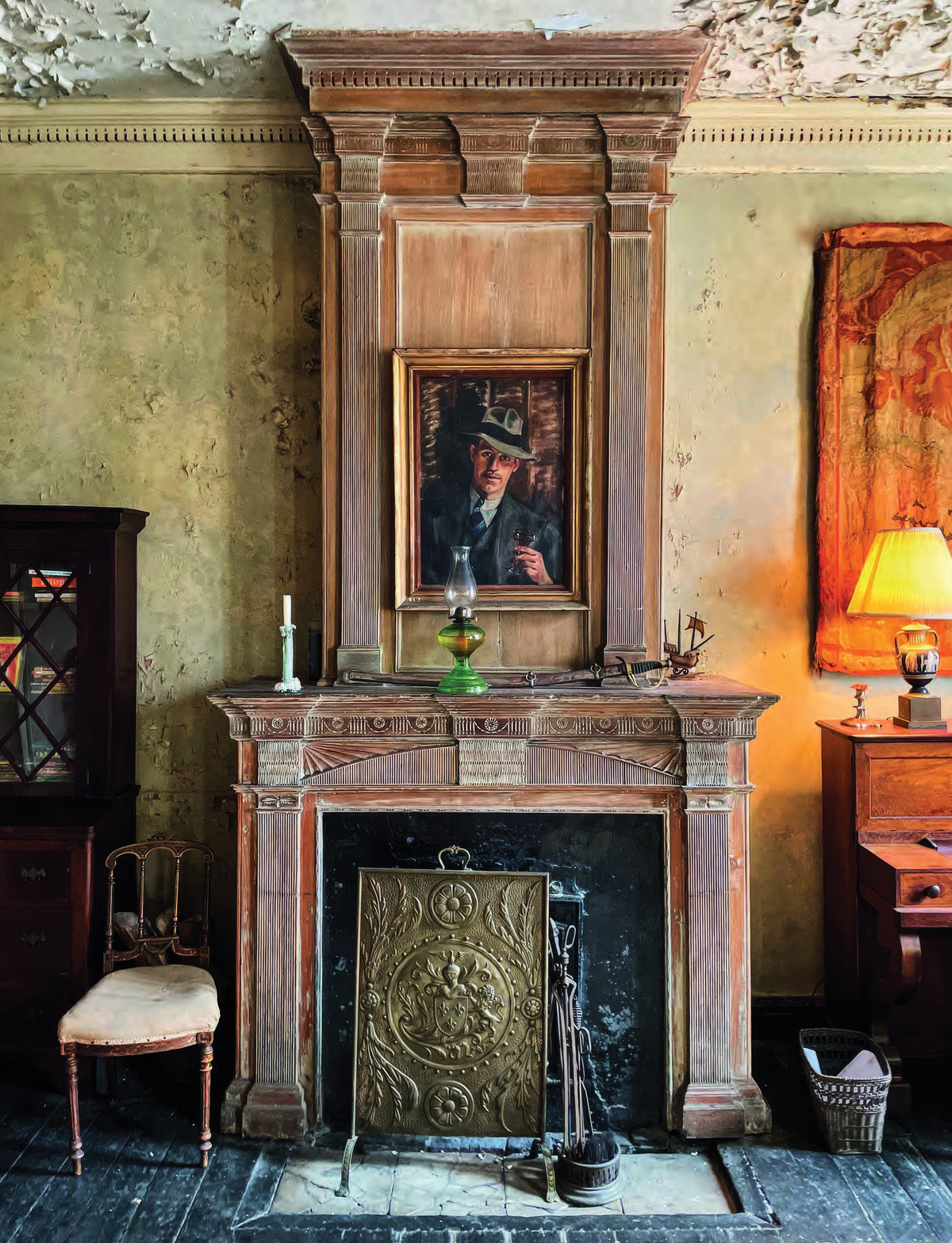
Designing living spaces often involves curating the placement of furniture and other large pieces. But more often, the heart of a home reveals itself in smaller objects arranged in groupings or vignettes. In his second book, Sean Scherer’s Vignettes (Vendome, April 1 publication date), artist and retailer Sean Scherer decodes the secrets to creating vignettes.
“People love to visit antique shops and look for treasures,” says Scherer, who owns the contemporary curiosity shop Kabinett & Kammer in the Delaware county village of Franklin. “But what do they do with those new finds? That’s where vignettes come in.” A vignette is simply a grouping of objects, whether they’re similar or not. According to Scherer, “Once you have more than three objects, you start arranging them, and it can happen organically and unconsciously.”
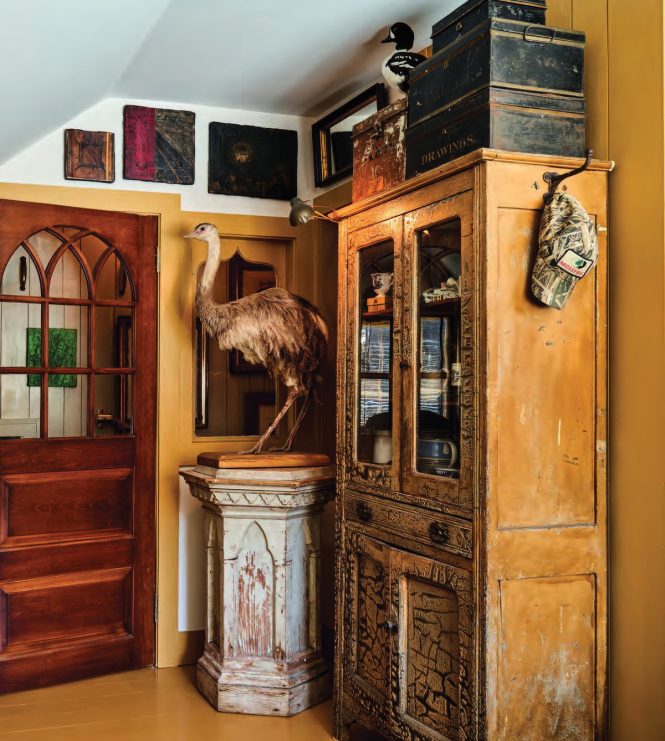
A corner of Sean Scherer’s home office, which he created out of an unused attic space and filled with his favorite things.
Scherer’s book breaks down the history of vignettes: They are closely related to still-lifes, where artists arrange objects and create a painting of that collection. Still-life paintings have been found in Egyptian tombs; vignettes evolved when collections and “cabinets of curiosities” became popular in late 16th-century Europe.
Vignettes are absolutely a maximalist idea, the opposite of sleek and streamlined—and collectors love that. Minimalism as a design ethos comes and goes, but vignettes remain a classic way to display treasured objects. Scherer’s embraced that philosophy since he was a young man. “First and foremost, I am an artist who loves objects,” he says. “I bought my first antique at 16. I love arranging still lifes, arranging objects, and juxtaposing. There is no hierarchy between painting and arranging still lifes.”
Nature Morte
When Vendome—who published Scherer’s first book, Sean Scherer’s Kabinett & Kammer: Creating Authentic Interiors, in September 2020—approached him about his next book, Scherer knew just the topic. “I thought, there really isn’t a book out there about vignettes. I envisioned a beautiful art/coffee table book that’s also a useful how-to.”
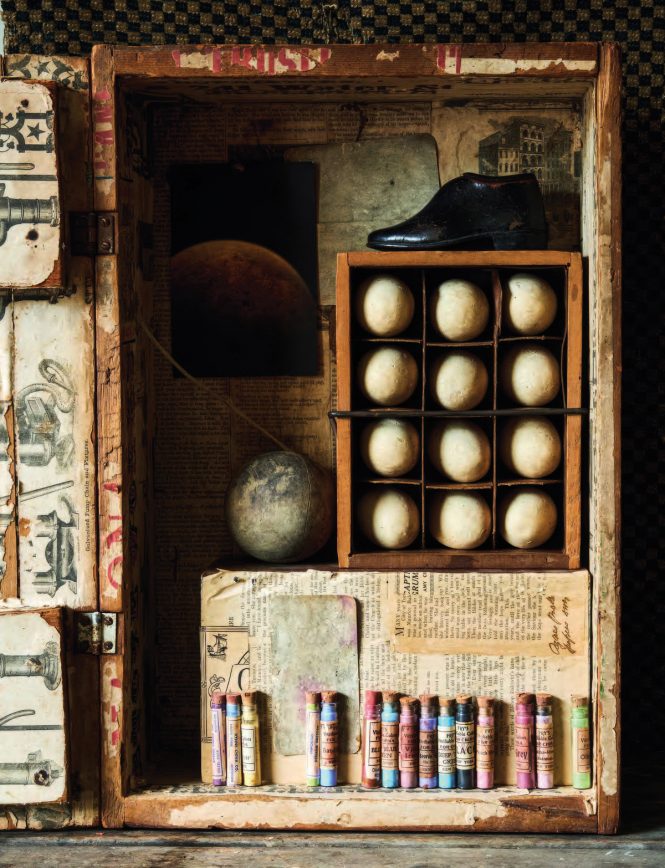
Scherer’s homage to Joseph Cornell, whose poetic assembling of everyday objects inspires his creations.
Sean Scherer’s Vignettes is exactly that. Rich with images shot at his shop as well as his home and that of family and friends, the book explains the hows and whys of arranging vignettes according to an assortment of formulas. Each of the 10 chapters focuses on techniques including symmetry, asymmetry, applied arts, and the OG vignette: nature morte, or “dead nature,” the French term for still life. “I tried to make sure each image had a takeaway or a lesson in it,” Scherer says. “It falls under interior design, but really, it lands between design and an art book.”
Anything Goes with Vignettes
Indeed, one could spend hours poring over the details in the 208-page book. Vignettes of all shapes, colors, and sizes spill off the pages and imbue the reader with ideas and inspiration. The biggest takeaway: Anything can contribute to a vignette. Seashells from your favorite destination, a branch of rosehips from the garden, a mercury glass jar handed down from an aunt—if it means something to you, it deserves to be part of a vignette, Scherer explains in the book. “You’d be surprised how much you can learn about someone from a still life or a vignette,” he writes in the introduction. Aligning a vignette with a self portrait, he reveals that a person does not need to stick to just one style: “[Vignettes] tell a story about who you are, and you don’t have to stick to one story.”
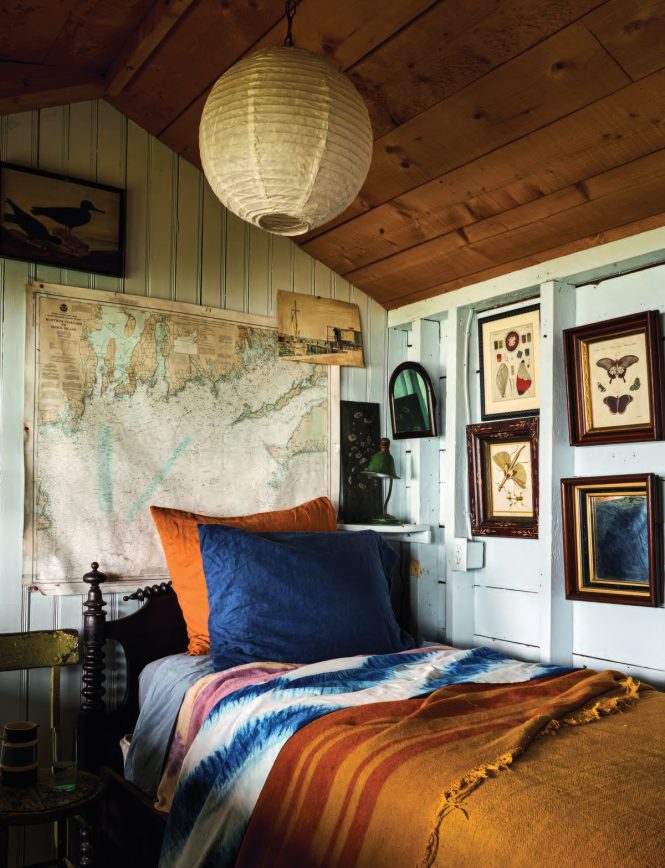
The sleeping nook in Mia Galison and Saxton Freymann’s waterside cabin in Westport Point, Massachusetts, features a grouping of butterfly and moth prints.
A two-page spread showcases Scherer’s own home office, which displays his favorite things. A wooden checkerboard stands behind an antique dish and a blown-glass vase next to a candlestick lamp, all assembled on top of a vintage dresser. Across the room, rustic boxes pile above a tall cabinet. The result is beautiful design, without appearing artificial. Several pages later, readers get another glimpse into Scherer’s talents with an intricate vignette that starts on a wall with a sculpted mirror, ledges, and decorative plates, and continues onto the surface of a drop-front desk. The symmetrical placement of the objects leads the eye around the vignette. That’s an important factor to consider, Scherer stresses: “You can look at vignettes and see how it works, with eye movement, and color, and design.”
Less Can Be More
Careful to explain each technique, Scherer treats the book as a kind of reference manual for those wanting to create their own vignettes. “My intent is that readers can go back to the book for inspiration over and over again,” he says. And vignettes do not need to be over the top, he adds: “I love the ‘Pare it Down’ chapter—how to do things with fewer objects. You could honestly have a beautiful vignette with three objects.”
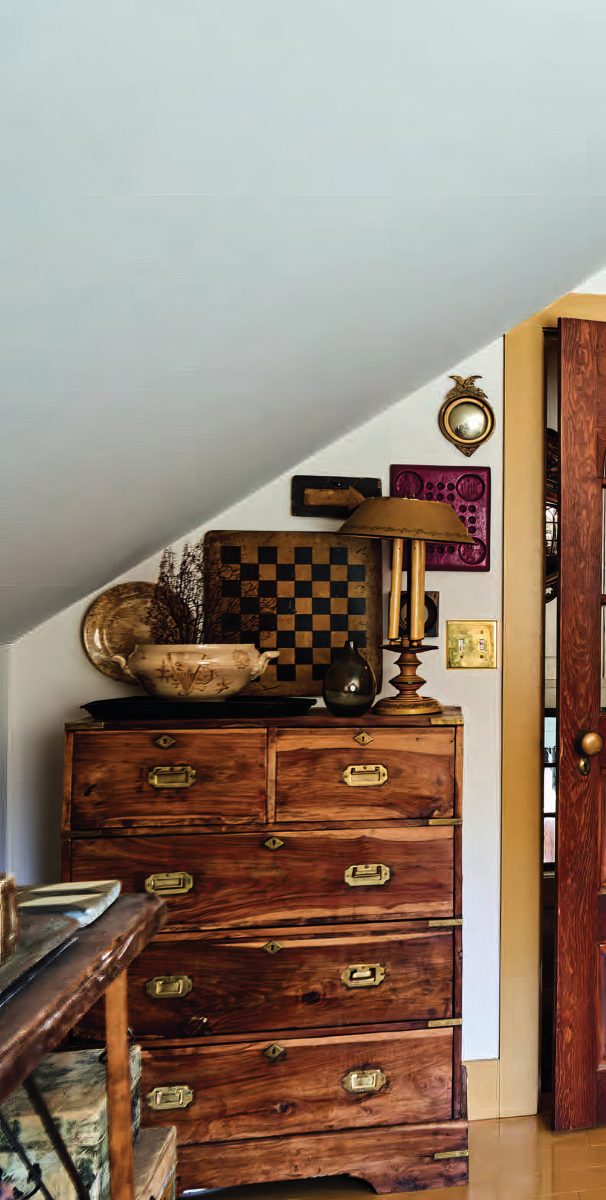
Plus, those objects do not need to carry the patina of age to be important. “The book’s focus is not just antiques; the lessons here are the same for things from any era,” Scherer says. In the book, he explains: “Though I am drawn to 19th-century things that show years of wear and tear, I’m a modernist at heart and do not see it as a contradiction to love both. Whether a piece dates from 1850 or 1950, if it’s good design, it’s good design. Plus, I love a good mix!”
The first step in creating a vignette is having a selection of favorite objects. Next comes the surface on which to arrange them, whether that’s a wall for a vertical display, or horizontal surfaces like a tabletop or a stool. Once the objects are placed, Scherer encourages playing around with them and editing their placement.
Everything is a Vignette
A historian as well as a designer, Scherer has taught art history and design at SUNY Oneonta for almost two decades. In 2002, he moved to the Catskills and opened Kabinett & Kammer in 2007. “I’m a one-person operation—I buy, display, and photograph the items, and I run the store,” Scherer says. Kabinett & Kammer is housed in a 19th-century building in Franklin, that was originally the post office and bank in town. The shop is open on weekends; Scherer’s merchandise can also be found at the Berkshire Galleries in Great Barrington, a multidealer antiques shop, which is open seven days a week. “The relationship to my being an artist and the history of vignettes and still life runs deep,” he says. “In my shop, everything is a vignette.”
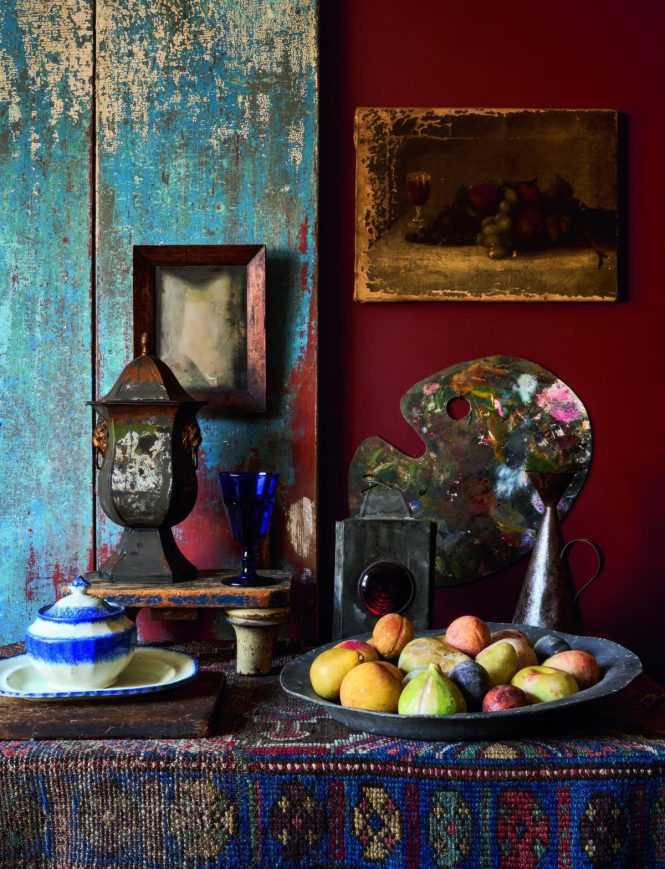
That does not mean he snaps up everything he sees for his vignettes, though: “I pass up a lot of things that don’t have a Kabinet & Kammer vibe—it may have a lot of financial value, but it just doesn’t fit,” Scherer says. “Vignettes are all about what fits your personality. Vignettes tell a story about who you are. And that’s important, especially in your own home.”
